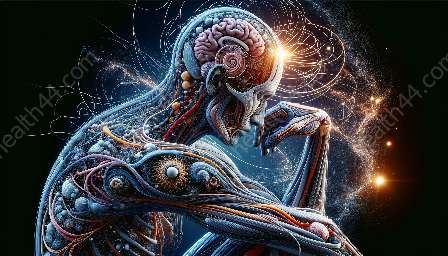Gross anatomy, also known as macroscopic anatomy, is the study of the larger structures of the human body that are visible to the naked eye. It serves as the foundation for understanding the intricacies of the body and is essential for medical training and health education.
The Importance of Gross Anatomy in Health Education and Medical Training
Gross anatomy is a fundamental component of health education and medical training. It provides students with a comprehensive understanding of the body’s structures, which is crucial for diagnosing and treating medical conditions. Through the study of gross anatomy, medical professionals are able to develop a deep understanding of the interconnections between various body systems and how they function as a whole.
Exploring the Essential Aspects of Gross Anatomy
1. Anatomical Terminology
Gross anatomy introduces students to a specialized vocabulary that is used to describe the structures of the human body. This includes terms that describe the location, shape, size, and function of organs and tissues. Understanding anatomical terminology is essential for effective communication among medical professionals and accurate interpretation of medical documentation.
2. Regional Anatomy
Regional anatomy focuses on the anatomic organization of specific parts of the body such as the head, neck, thorax, abdomen, and pelvis. This approach allows students to study the relationships between various structures within a specific region, providing insights into the functional implications of these connections.
3. Systemic Anatomy
This aspect of gross anatomy involves the study of the body’s systems, including the musculoskeletal, cardiovascular, respiratory, digestive, and nervous systems. Systemic anatomy offers a comprehensive understanding of how these systems work together to sustain life and maintain overall health.
4. Cross-Sectional Anatomy
Cross-sectional anatomy involves the study of the human body through imaging techniques such as CT scans and MRI. It enables students to visualize the internal structures of the body in a series of cross-sections, providing a deeper understanding of spatial relationships and anatomical variations.
The Role of Gross Anatomy in Medical Diagnostics and Treatment
Gross anatomy plays a critical role in medical diagnostics and treatment. Medical professionals utilize their knowledge of anatomical structures to accurately diagnose conditions, identify potential health risks, and determine appropriate treatment methods. Additionally, surgical procedures rely heavily on an understanding of gross anatomy to ensure precision and minimize the risk of complications.
Interactive Learning Approaches for Gross Anatomy
Health education and medical training are increasingly incorporating interactive approaches to teaching gross anatomy. This includes the use of virtual dissection software, 3D modeling, and augmented reality tools to enhance students’ understanding of anatomical structures and their functions.
Conclusion
Gross anatomy serves as a foundational pillar in health education and medical training, providing students with essential knowledge of the human body’s structures and their significance in diagnosing and treating medical conditions. Through an in-depth exploration of anatomical structures, medical professionals gain the expertise necessary to address a wide range of health concerns and contribute to the advancement of medical science and patient care.


